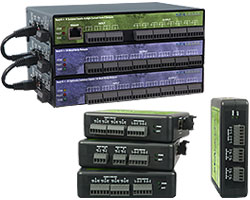Responding to New Demands: The Unmanned Campaign Plan
June 22, 2021The global security environment is shifting towards great power competition: when two or more countries have amassed enough military, political and economic power to compete. As a result, our traditional force structure is unable to support the new demands.
In response, the U.S. Navy and Marine Corps have released the Unmanned Campaign Plan. The plan introduces their approach to integrate autonomous systems into warfighting by outlining key components:
- Plan of Actions and Milestones
- Campaign Framework
How the Unmanned Campaign Framework Works
The Unmanned Campaign Framework is the strategy that the Navy and Marine Corps designed to combine air, sea, ground and manned-unmanned efforts to create a cohesive, lethal and scalable force. The integration of the autonomous systems is a supplement to traditional methods that brings additional fighting capabilities.
Unmanned systems will be utilized in all mediums: surface, subsurface, ground and air. They persist inside the weapons engagement zone of any adversary, allow adaptation to distributed maritime operations (DMO) and enable commanders to maintain advantage by accepting higher risk decisions. These systems will quickly become an integral part of the Navy and the Marine Corps’ defense teams.
Goals and Industry Implications
The goals of the Unmanned Campaign Framework are to:
- Advance manned-unmanned teaming effects within the full range of naval and joint operations
- Build a digital infrastructure that integrates and adopts unmanned capabilities at speed and scale
- Incentivize rapid incremental development and testing cycles for unmanned systems
- Disaggregate common problems, solve once and scale solutions across platforms and domains
- Create a capability-centric approach for unmanned contributions (platforms, systems, subsystems) to the force
To rapidly meet these goals the Navy has established warfare centers, research labs and government field activities, but industry will play a large role in creating the hybrid fleets. They are seeking commercial partners for a variety of studies, experiments, wargames, exercises, testing and simulation efforts.
The technology industry will benefit from these partnerships not only through the creation of new unmanned systems, but from the publication of government, academic, and industry technical papers as well. Autonomous technology is continuously expanding and will persist in the future.
Leaders in advanced robotic system design, underwater ROVs and unmanned vehicle technology are using Sealevel’s digital, analog, and serial I/O in support of unmanned technology control.

Monitor and control real-world signals with any computer using Sealevel digital and analog I/O products. Select from field-proven optically isolated in puts, Reed and Form C relay outputs, TTL interfaces to solid-state relays, A/D and D/A functionality.

Sealevel asynchronous and synchronous serial interfaces are designed for high-speed applications and support RS-232, RS-422, RS-485, and RS-530 electrical interface standards. Whether you choose a traditional bus-based approach or opt for easy-to-use USB or Ethernet solutions, you will be quickly communicating with your serial devices.
Mission Critical Military Applications
For over 30 years, Sealevel has exceeded the expectations for every major US and Allied military contractor including Northrop Grumman, Raytheon, BAE, Boeing, L3Harris, General Dynamics, NAVWAR, NAVAIR and SOCOM.
>>> Defense Communications Solutions: Case Studies & White Papers